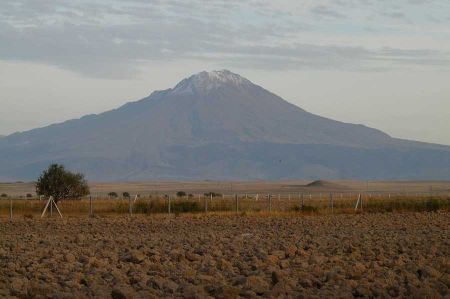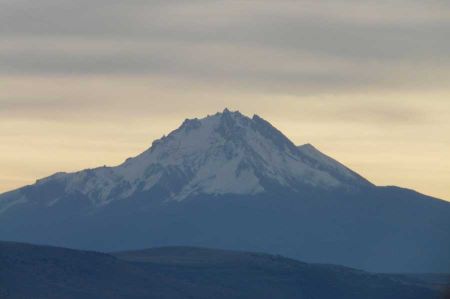Hasan Dağı - inactive volcanic mountain in Cappadocia
- Written by Portal Editor
The 3,268 meter high, inactive volcano Hasan Dağı, which is one of the three most important "contributors" to shaping the landscape and the tuff rock formations of the Cappadocia region, is visible from afar.
As the second highest mountain in Central Anatolia, it is also an interesting attraction for hikers and climbers who climb the mountain from different sides on trails lasting up to 6 hours. The main starting points for climbing the mountain are Helvadere and Karkın. From the top there is a comprehensive panoramic view to the Taurus Mountains, across the Anatolian highlands with the Tuz Gölü and across parts of Cappadocia.
Tuff landscape Cappadocia - Hasan Dağı
 Like the Erciyes Dağı for Central Cappadocia, the Hasan Dağı with its eruptions is responsible for the tufa landscape of western Cappadocia, especially around Aksaray and the Ihlara Valley. The last eruptions of the stratovolcano date to around 7550 BC. In ancient records, the Hasan Dağı is called Argaios or Argeiopolis Mons. A wall painting, more than 7,000 years old, showing the houses of the prehistoric settlement Çatalhöyük and the erupting volcano in the background, is considered to be one of the earliest depictions of volcanic activity.
Like the Erciyes Dağı for Central Cappadocia, the Hasan Dağı with its eruptions is responsible for the tufa landscape of western Cappadocia, especially around Aksaray and the Ihlara Valley. The last eruptions of the stratovolcano date to around 7550 BC. In ancient records, the Hasan Dağı is called Argaios or Argeiopolis Mons. A wall painting, more than 7,000 years old, showing the houses of the prehistoric settlement Çatalhöyük and the erupting volcano in the background, is considered to be one of the earliest depictions of volcanic activity.
The height of the mountain and the almost untouched mountains around the summit are largely responsible for the excellent water quality of the springs, which supply some of the villages with the finest drinking water. The region around Hasan Dağı is a real challenge for nature lovers, despite the proximity to the Ihlara Valley and other sights in Cappadocia.
Coordinates: 38 ° 7 ′ 35 ″ N, 34 ° 9 ′ 55 ″ E
Please also read:
Kleinwalsertal in Vorarlberg - mountain hiking and caravanning
National Park Olymp - pure nature for hiking and relaxing
